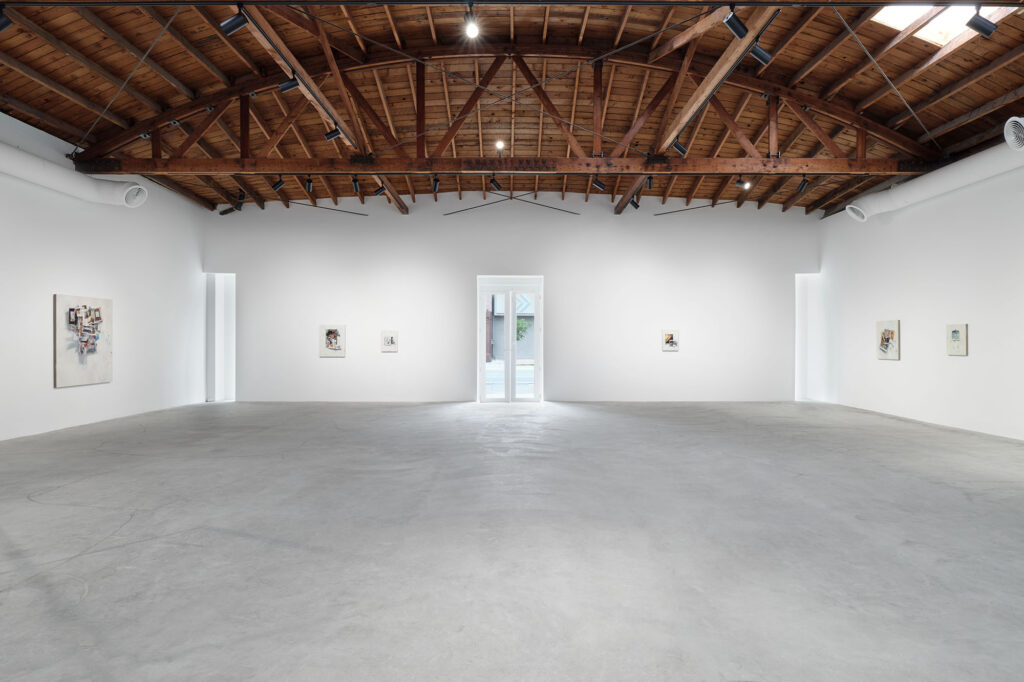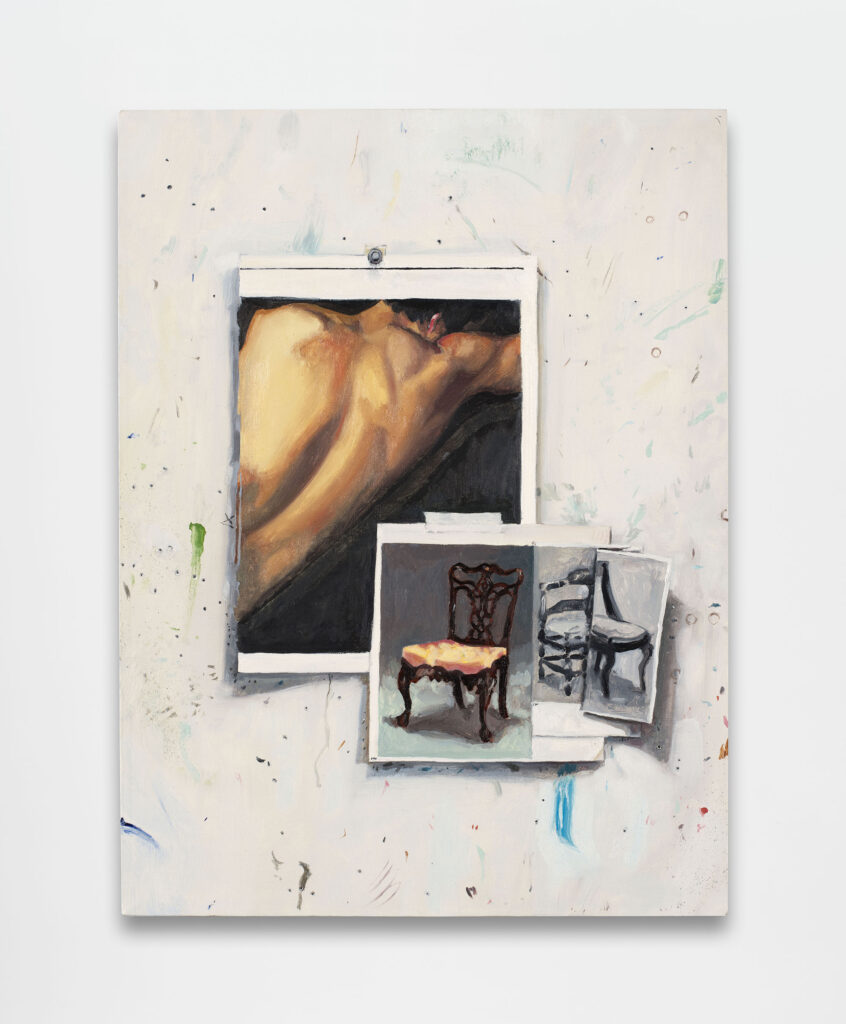What is revealed behind the fold? What is hinted at, but goes unseen? This is the power of art; to make something in our minds beyond what’s on the page.
Hank Ehrenfried’s work — on display in Los Angeles for the first time as the new Vardan Gallery’s entrée into the art world — is a pared-down photorealism, painting after painting of crumpled collages thumb-tacked to the walls, as if the artist had chosen to frame and immortalize the contents of his pockets. It’s a tribute to ephemera, partial and redacted portraits of a man’s taste — textual, sexual, stylistic, and artistic.

I visited Ehrenfried’s postage-stamp studio in Brooklyn three months before his Los Angeles opening. It’s in an unassuming warehouse subdivided with 8-foot walls to create a cell-block of studio spaces. Ehrenfried’s studio, like his work, is simultaneously minimalist and crowded. His plain white walls are hung with the collages that I recognize from his paintings, and his floor space is occupied by cubbies of paints and a cheap metal bookshelf with neat rows of titles that neatly mirror his themes: Magic, The Male Nude, The Art of Illusion, Working Out, Pablo Picasso, Cubism. “The mentality to hoard and let things accumulate is part of maintaining a studio,” Ehrenfried tells me.
Since 2019, Ehrenfried has been working on his current collection of collage paintings. During the pandemic, when he wasn’t able to get new materials, he found himself treating and re-treating the materials he had on hand, a mix of found magazine cut-outs and tracing paper. This breaking apart and recombination in a controlled system led to the collages which serve as his subjects. They are overlapping, folded — as if you could reach into the painting and turn their pages to see what’s on the other side, hinting at more information that is irreversibly lost to the viewer in the transfer from collage to paint.

Ehrenfried traces his lineage to the cubists, who collaged and flattened the world during a shift into modernity. He draws an analogy between the first World War and COVID, one hundred years apart, a period which saw artists sitting and waiting, trying to track the slippery compression of time and history that happens in moments of crisis. “The cubists were also interested in obfuscation,” he tells me. By placing disparate references — from male nudes to antique furniture — overlapping and folded into one another, Ehrenfried suggests a unity and a dialogue between his subjects, the way Picasso makes a face from many cut-out angles of a face.
“There’s a camp value to antiques,” Ehrenfried says, before revealing that one of his favorite pastimes is watching furniture restoration on YouTube. He revels in the obscenity of luxuries past, but also the permanence of objects and their images through change. “At what point do you let something become garbage?” he muses. There’s a documentary quality to his painting, a restoration and recombination of images to bring the past and the present into alignment.
Ehrenfried shares that his grandmother was a Holocaust survivor. After her passing, he was left with tons of documents, but just as many questions — questions he’ll never have answers for. “The lack of answer in itself is content,” he says.
This tension of desire between the known and the unknowable in the paintings slips discreetly into a dialogue with the erotic. Antique furniture ads nestle next to nude models and tear-outs of hardcore gay porn, an aesthetics of queer domesticity that contests what is (or historically has been) appropriate to the sphere of the home. The underlying theme of obfuscation feeds into this historical narrative and hints at the kind of “looking under the folds” present in gay cruising culture, in which men encounter one another in public spaces for sex. Historically, with the home as a wife’s domain, this sort of risky public encounter in restrooms and parks were how gay men were able to meet. The banal and everyday (a public restroom, for instance) become erotically charged if you stay long enough and look hard enough. Likewise, these paintings invite a lingering, an undercurrent of sexuality that is sometimes evident, often masked.

Space plays a role in these paintings, too, as Ehrenfried’s studio walls themselves become part of his subject, down to the electrical outlets. It’s a winking nod to the process behind the painting. The walls in the paintings are punctured with tacks and splattered with paint, themselves artifacts of the painting that’s happened on them. “We’re in a moment where everything feels miscellaneous,” Ehrenfried tells me, thinking about the distance between the present moment and history, between subject and context.
“At the end of the day, the paintings are about looking,” he tells me. “There’s so much stuff — how do you make sense of it? How do you decide what’s important, and what happens to the other stuff?”
The stuff — and the studio itself — become a metaphor for the artist’s interior life. When you follow an obsession in a studio, Ehrenfried says, your brain itself becomes a studio, always working, so each artwork is a few hours of paint on canvas and many more of thought, effort, and obsession.
This obsession is what is on display here. Always obfuscated, always revealing itself.
Hank Whrenfried
“Under the Impression”
September 16 – Oct 15, 2023
Vardan Gallery
6810 Melrose Avenue
Los Angeles, CA 90038





